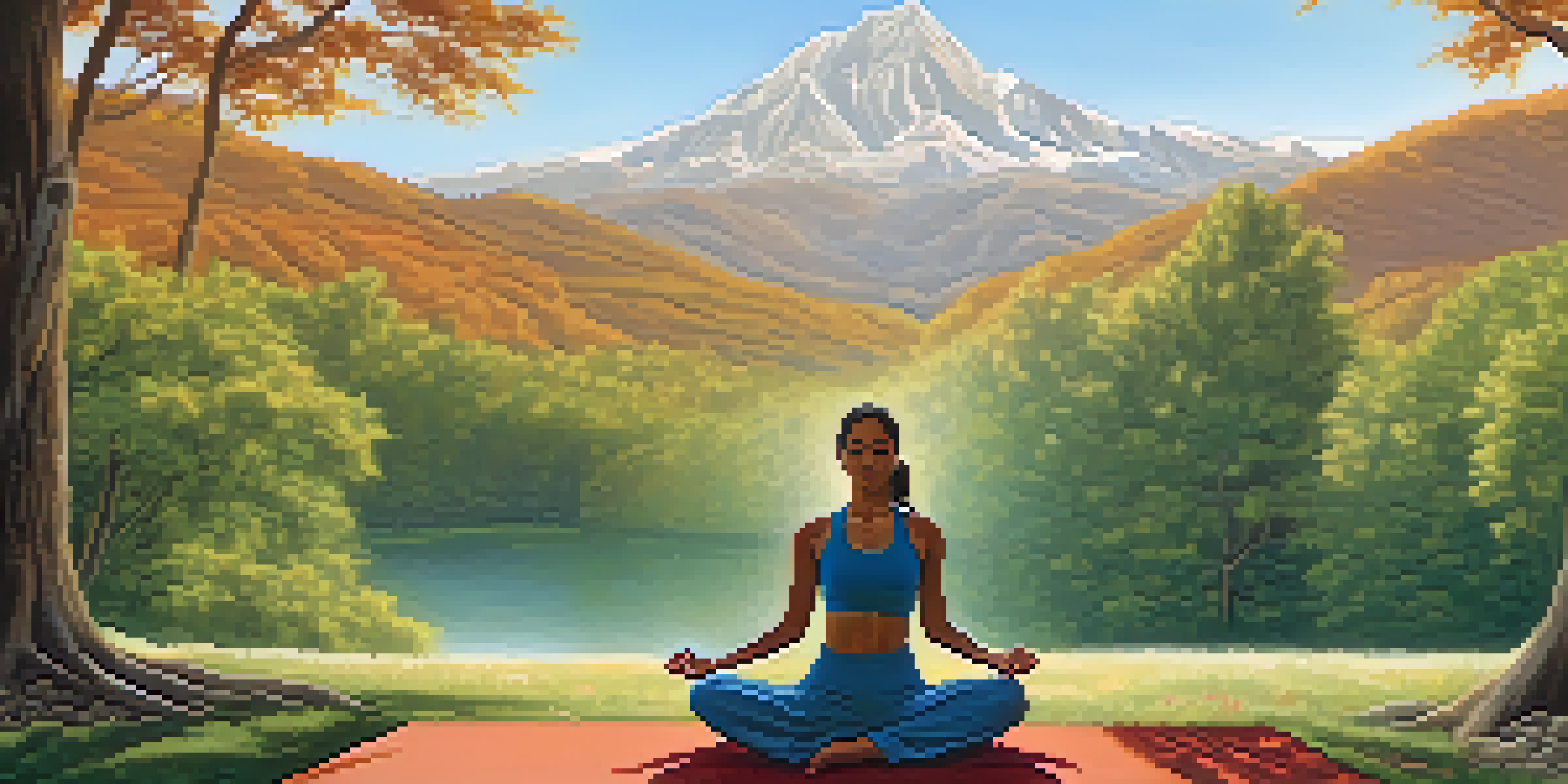Understanding the Chakras: Yoga for Stress Release

What Are Chakras and Why Are They Important?
Chakras are energy centers in our bodies that influence our physical, emotional, and spiritual well-being. They are often visualized as spinning wheels of energy, each associated with different aspects of our lives. Understanding these chakras can empower us to address imbalances that lead to stress and anxiety.
The body is your temple. Keep it pure and clean for the soul to reside in.
There are seven main chakras, each located along the spine, starting from the base and moving to the crown of the head. Each chakra corresponds to specific emotions and physical functions, shaping how we interact with the world. When these energy centers are blocked, it can manifest as stress, fatigue, or even illness.
By learning about chakras, we can gain insights into our personal challenges and develop strategies to achieve balance. This understanding lays the groundwork for using yoga as a tool for stress release and overall wellness.
The Root Chakra: Grounding Yourself
The Root Chakra, located at the base of the spine, is all about grounding and stability. It connects us to the earth, providing a sense of safety and security. When this chakra is balanced, we feel more secure and less anxious, which is crucial in managing stress.

To activate the Root Chakra, consider yoga poses like Mountain Pose or Warrior I. These poses help you feel connected to the ground, promoting a sense of stability. Engaging in practices that enhance your connection to nature can also support this chakra.
Chakras Influence Well-Being
Chakras are energy centers that affect our physical, emotional, and spiritual health.
When you take time to ground yourself, whether through yoga, meditation, or simply walking barefoot outside, it can significantly reduce feelings of stress. Embracing this practice allows you to cultivate a strong foundation for emotional resilience.
The Sacral Chakra: Embracing Emotions
Located just below the navel, the Sacral Chakra is associated with our emotions, creativity, and relationships. When in balance, this chakra allows us to embrace our feelings and express our creativity freely. However, when blocked, it can lead to emotional instability and increased stress.
When you are in alignment with your true self, everything happens effortlessly.
Practicing hip-opening yoga poses like Pigeon Pose or Bound Angle Pose can help release tension in the Sacral Chakra. These movements encourage emotional expression and creativity, essential for reducing stress. Allowing yourself to experience and express emotions can be incredibly liberating.
By nurturing the Sacral Chakra, you cultivate a healthier emotional landscape. This balance allows you to respond to stressors more effectively, turning challenges into opportunities for growth.
The Solar Plexus Chakra: Confidence and Willpower
The Solar Plexus Chakra, located in the upper abdomen, is the center of personal power and confidence. When this chakra is balanced, we feel motivated and capable, helping us navigate life's challenges with ease. However, stress can often lead to feelings of powerlessness, causing this chakra to become blocked.
Incorporating yoga poses like Boat Pose or Warrior III can help strengthen this chakra. These poses build core strength, reflecting the inner confidence we seek. As you practice, focus on visualizing your personal power radiating from this energy center.
Yoga Balances Energy Centers
Practicing specific yoga poses can help activate and balance each chakra, reducing stress.
Fostering a strong Solar Plexus Chakra not only helps reduce stress but also empowers you to take charge of your life. This confidence translates into resilience, enabling you to tackle stressors head-on.
The Heart Chakra: Cultivating Love and Compassion
The Heart Chakra, situated in the center of the chest, is the bridge between our lower and upper chakras. This energy center is all about love, compassion, and connection with others. When the Heart Chakra is open, it promotes feelings of warmth and reduces stress by fostering positive relationships.
Yoga poses such as Camel Pose or Cobra Pose can help open the Heart Chakra. These heart-opening poses encourage a sense of vulnerability, allowing love and compassion to flow freely. Additionally, practicing gratitude can enhance the openness of this chakra.
By nurturing the Heart Chakra, we create a supportive environment for ourselves and those around us. This connection fosters resilience against stress, reminding us that we are not alone in our struggles.
The Throat Chakra: Expressing Yourself
The Throat Chakra, located in the throat, governs our ability to communicate and express ourselves. When this chakra is balanced, we speak our truth with confidence and clarity. However, stress can lead to difficulties in expressing our feelings, resulting in blockages.
Practicing yoga poses like Fish Pose or Plow Pose can help stimulate the Throat Chakra. These poses encourage openness and help release tension in the neck and shoulders. Additionally, incorporating breathwork can enhance communication and self-expression.
Emotional Awareness is Key
Understanding and nurturing our chakras enhances emotional resilience and personal growth.
By strengthening the Throat Chakra, we empower ourselves to articulate our feelings and needs. This clarity not only helps reduce stress but also improves our relationships with others.
The Third Eye Chakra: Intuition and Insight
The Third Eye Chakra, located between the eyebrows, is the center of intuition and insight. When this chakra is balanced, we can see situations clearly and trust our instincts. A blocked Third Eye Chakra can lead to confusion and increased stress, making decision-making challenging.
Incorporating yoga poses such as Child's Pose or Forward Bend can help activate the Third Eye Chakra. These poses promote relaxation and introspection, allowing you to tune into your inner wisdom. Meditative practices focused on mindfulness can also enhance this chakra's energy.

By nurturing the Third Eye Chakra, you cultivate clarity and confidence in your decisions. This intuitive guidance can be a powerful ally in navigating stress and uncertainty.
The Crown Chakra: Connection to Higher Self
The Crown Chakra, located at the top of the head, represents our connection to the universe and our higher self. When this chakra is open, we experience a sense of peace and interconnectedness. Conversely, a blocked Crown Chakra can lead to feelings of isolation and stress.
Practicing yoga poses like Headstand or Lotus Pose can help stimulate the Crown Chakra. These poses encourage openness to spiritual insights and foster a sense of connection to something greater. Additionally, meditation practices focusing on stillness can enhance this energy center.
By embracing the energy of the Crown Chakra, we can cultivate a deeper sense of purpose and belonging. This connection not only alleviates stress but also enriches our overall well-being.